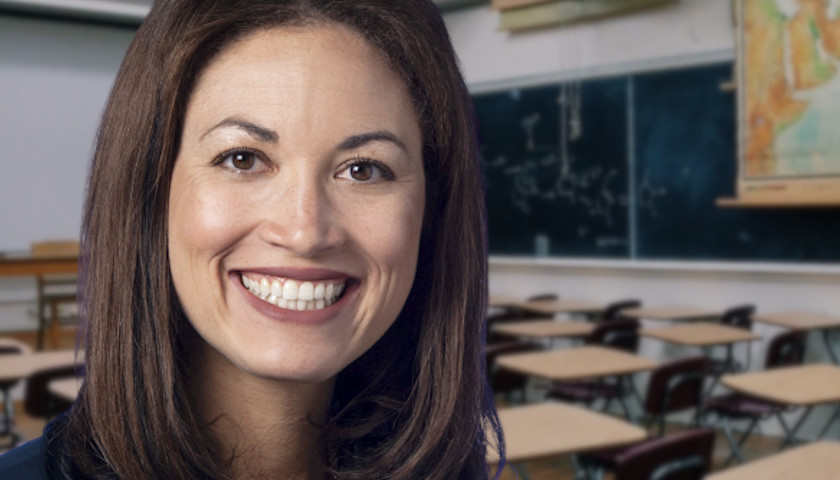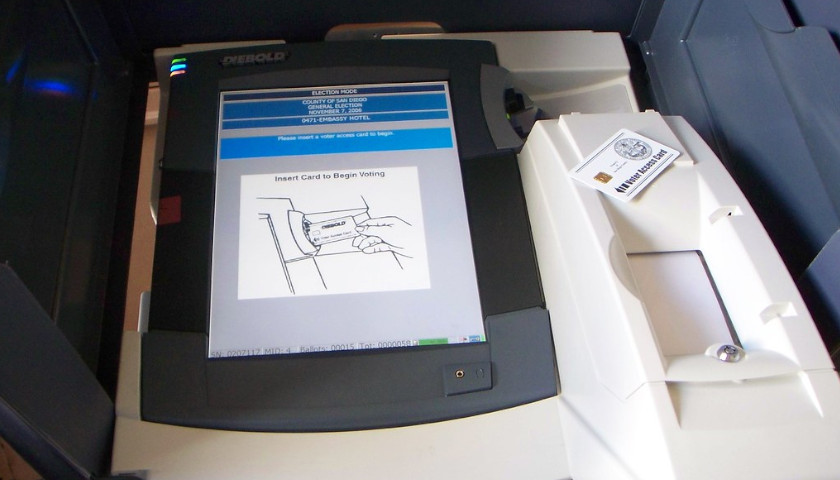The recently released Tennessee State Report Card for schools and districts offers a means for parents to gather information about their children’s schools and compare and contrast neighboring school districts. The report focuses on performance, but also provides data on student demographics, student funding, staffing levels, and other pertinent information required by parents to make informed judgments about their children’s education opportunities.
“With the release of the State Report Card, Tennessee continues our firm commitment to providing families with clear, actionable information on how our districts and schools are serving students,” said Commissioner Penny Schwinn; adding that the document, “allows stakeholders to access years’ worth of meaningful data through an interactive, easy-to-navigate online platform, and now the latest data is available to help Tennesseans to explore and learn about their local schools and districts.”
In comparing three, very different districts – Cannon County, Williamson County, and Metro Nashville Public Schools (Davidson County) – The Tennessee Star focused on who those school systems are serving, how much was being spent, and the investment generated.
Cannon County
Cannon County (CCS) is southeast of the city of Murfreesboro, sharing its western border with Rutherford County. It is responsible for 1854 students – 3 percent of which are black, 4 percent are Hispanic, and 92 percent are white. About 23 percent fall into the economically disadvantaged category, and 1 percent are classified as English Learners. Cannon County states its mission as, “Create a Unified Environment That Will Provide Opportunities for All Students to Succeed and Reach Their Full Potential.”
CCS is one of the smallest school districts in the state, spending just $9,436 per pupil. Local funds supply 23 percent of that funding. The state pays 64.6 percent, and the federal government makes up the remaining 13.6 percent. Their total budget is $17,034,336.02 annually.
Staffing-wise, the rural district employs 137 teachers, 14 support personnel, and 10 instruction leaders for 7 schools. The teacher-to-student ratio is 14:1 and they have a teacher retention rate of 85.2 percent – lower than the state average of 92.1 percent. Teacher Retention reflects the percentage of teachers who were staffed in this district during the 2020-21 school year and continued to teach in the district for the 2021-22 school year.
This year’s State Report Card graded Cannon County as a “satisfactory district.” Which would translate to a “C” if this was a traditional report card.
Achievement-wise, the district has a success rate of 23.6 percent. The one-year success rate represents the percentage of students whose scores met or exceeded expectations on math and ELA state assessments. The percentage cited here represents the district’s success rate compared to the state. This year’s number is higher than last year’s but slightly lower than pre-pandemic.
Cannon County’s student growth scores earned a “1” designation in this category, the lowest designation available on a scale of 1-5. Districts receive a Level 1 when there is significant evidence that their students made less progress than expected on state math and ELA assessments.
The district’s Chronically Out of School Rate of 14.5 percent – the percentage of students enrolled missing 10 percent or more of instructional days enrolled – falls below the state average of 20.3 percent. Their graduation rate is 86.2 percent, beating the state average of 88.7 percent.
When it comes to the English Language Proficiency Assessment Rate – the percentage of English learners (EL) enrolled in this district who are demonstrating growth in their English language abilities by meeting growth standards as reflected by the WIDA ACCESS assessment – CCS had less than 10 students who met the criteria, so there was no score awarded.
Overall the district is showing improvement from last year but still has ground to regain.
Williamson County
Williamson County (WCS) sits directly south of Nashville. Home to 41,252 students, it is continually recognized as a top-performing school district for academics, the arts, and athletics. It is also one of Tennessee’s wealthier districts. 78 percent of their students are white, with 5 percent black and 7 percent Hispanic. Only 3 percent of their students are classified as economically disadvantaged, and 3 percent are English Learners.
The high-achieving district employs 2,767 teachers to provide a 15:1 student/teacher ratio. WCS retention rate is 87.9 percent, slightly lower than the state average. In addition, the district employs 369 support personnel and 147 instructional leaders for 51 schools.
Williamson County, one of the state’s fastest-growing districts, spends $10,691 per pupil, with an annual budget of $416.183,874. 65.6 percent of that is local funding. The state provides 29.1 percent and 5.3 percent is federally sourced. ‘
The bulk of money provided to schools by the federal government is targeted to serve economically disadvantaged kids, English learners, or students with disabilities, so it is not unexpected that a district that serves fewer high-needs kids would receive a lower percentage of federal funding.
Williamson County received the grade of “advanced” status from the Tennessee Department of Education (TDOE) on the 2022 State Report Card. This translates into an “A”.
Their success rate was 67.2 percent, with grades 9-12 being slightly lower than the other grade bands at 63.6 percent. Like Cannon County, WCS has mostly recovered from last year, but scores are still slightly lower than pre-pandemic.
Student achievement growth in WCS earned the district a “5” designation. Districts receive a Level 5 when there is significant evidence that their students made more progress than expected on state math and ELA assessments.
Only 13.3 percent of WCW were considered Chronically Out Of School, considerably lower than the state average. The district’s graduation rate of 96.2 significantly eclipsed the state average. The English Language Proficiency Assessment Rate was 59.8 percent.
Metro Nashville Public Schools (Davidson County)
Metro Nashville Public Schools (MNPS) presents a stark contrast to the other two schools. It is Nashville’s public school system and is home to 77,459 students – 25 percent White, 39 percent Black, and 31 percent Hispanic. 35 percent of Nashville’s students qualify as economically disadvantaged, and 27 percent are recognized as English Learners.
Included in the mix are 31 public charter schools serving 15,142 students. This makes Nashville unique to the other two districts as neither currently has any charter schools.
The annual budget for MNPS is $1,096,741,240.92, bypassing the billion-dollar mark for the first time this past year. Local funds account for 63.4 percent of the budget, with state funds providing 24.8 percent, and federal monies making up the remaining 11.8 percent.
Nashville’s per-pupil rate of $14,o76, is considerably higher than both Cannon and Williamson County, as well as the state average. This is likely due to a higher concentration of students with high needs and the increased cost of specialized services and teachers required to educate those students.
To serve their students, MNPS employs 5844 teachers – a student/pupil ratio of 13:1 – along with 931 support personnel, and 386 instructional leaders at 162 schools. Metro’s teacher retention rate is reportedly 87.7 percent, also lower than the state average.
On this year’s Report Card, MNPS earned the designation of “advancing”, which would translate into a “B.” Their composite success rate was 23.3 percent, buoyed by q success rate of 26.2 percent for grades 3-5. The diminishing levels for children as they progressed through the system might be considered a red flag. Grades 6-8 achieved 22.5 percent, and 9-12 had a success rate of 20.4 percent.
This was an exemplary year for MNPS in the area of “growth”. Like WCW, they also achieved a “5.”
For MNPS, the number of students considered Chronically Out of School rose this year to 29.7 percent. Before the pandemic, rates typically fell in the 15 percentile range. The district graduation rate was 81.8 percent, on par with past years’ rates. Nashville high schools have consistently fallen between 80 and 82 percent rates since 2018. Metro’s English Proficiency rate this year was 41.1 percent, while slightly below the state level, but a return to pre-pandemic rates.
All three districts have areas where they are succeeding, as well as areas that raise concerns. Overall for achievement, CCS scored lower than MNPS despite having a similar success rate. This is likely due to their poor growth score.
Growth scores helped MNPS narrowly miss matching WCS’s overall grade, likely due to low a lower success rate and a higher-than-average Chronic Out of School rate. As a result, the district is putting policies in place they hope will lower the number of kids missing more than 10 percent of the school year.
Williamson County and Nashville schools spend more per pupil than the state average. $10,581 per pupil. Cannon County students receive slightly less, something expected to change with the new TISA formula slated to start next school year. The new formula will fund districts at an increased rate to address individual student needs like those students who may be low-income, have a disability, be gifted, have characteristics of dyslexia, or live in a sparse community.
The data used in the State Report Card is culled from Tennessee’s standardized test, TCAP, administered last Spring. Historically, Tennessee’s efforts to measure the academic achievement of students have been fraught with issues. Low participation rates on the 2021-2022 TCAP led to Commissioner Schwinn’s decision not to include letter grades with this year’s Report Card.
In a phone conversation with The Star, House Education Committee Chair Scott Cepicky (R-Culleoka) said, “For my part, I feel that the data is valid and I encourage everyone to dig into it so that when the General Assembly reconvenes in January we are ready to do what’s necessary to continue to drive us toward the goal of being number 1 in education across the country. We’ve made gains this past year, but now is not the time to stand pat.”
Cepicky’s view is not one shared by everyone. Education advocates have long held the view that testing is flawed and is primarily a tool for undermining the public school system.
“The very idea that the Tennessee Report Card may be counted on to provide useful information for teachers and families is laughable. Tennessee’s standardized tests have been riddled with errors and flaws for many years,” says former MNPS Schoolboard member and current Executive Director of Pastors for TN Children Amy Frogge in a text exchange with The Tennessee Star, “Yet, we continue to over-test and attach high stakes to testing outcomes. State tests are simply not a fair and objective measurement of student achievement or ability. However, they have been very useful in facilitating school privatization and turning a hefty profit for out-of-state vendors.”
Tennessee parents are trying to get a sense of understanding and purpose in regard to their children’s education opportunities.
“As an MNPS parent, my kids spend a lot of class time throughout the year on testing. I rarely see the results and when I do they’re so confusing I don’t understand what they mean”, says a former school board candidate, and public school parent Amy Pate, “While I love the accountability of a report card for schools, I don’t see it giving me what I need – which is a way to IMPROVE those scores.”
Pate goes further, saying, “MNPS achievement scores aren’t good – especially compared to other counties. My kids’ scores should and could be way better. But nobody helps me as a parent use the data to help improve them. It’s frustrating. I ask myself a lot, what are these tests even for if nobody uses the information? And if they are using the information, why don’t things improve?”
Pate’s words echo those of parents across the state of Tennessee and, as indicated by conversations with Education Committee Chair Scott Cepicky (R-Culleoka), will be a primary topic of conversation when the 113th General Assembly convenes at noon on Tuesday, January 10.
– – –
TC Weber is a reporter at The Tennessee Star and The Star News Network. He also writes the blog Dad Gone Wild. Follow TC on Twitter. Email tips to [email protected]. He’s the proud parent of two public school children and the spouse of a public school teacher.
Photo “Penny Schwinn” by The College System of Tennessee. Background Photo “Classroom” by Wokandapix.








